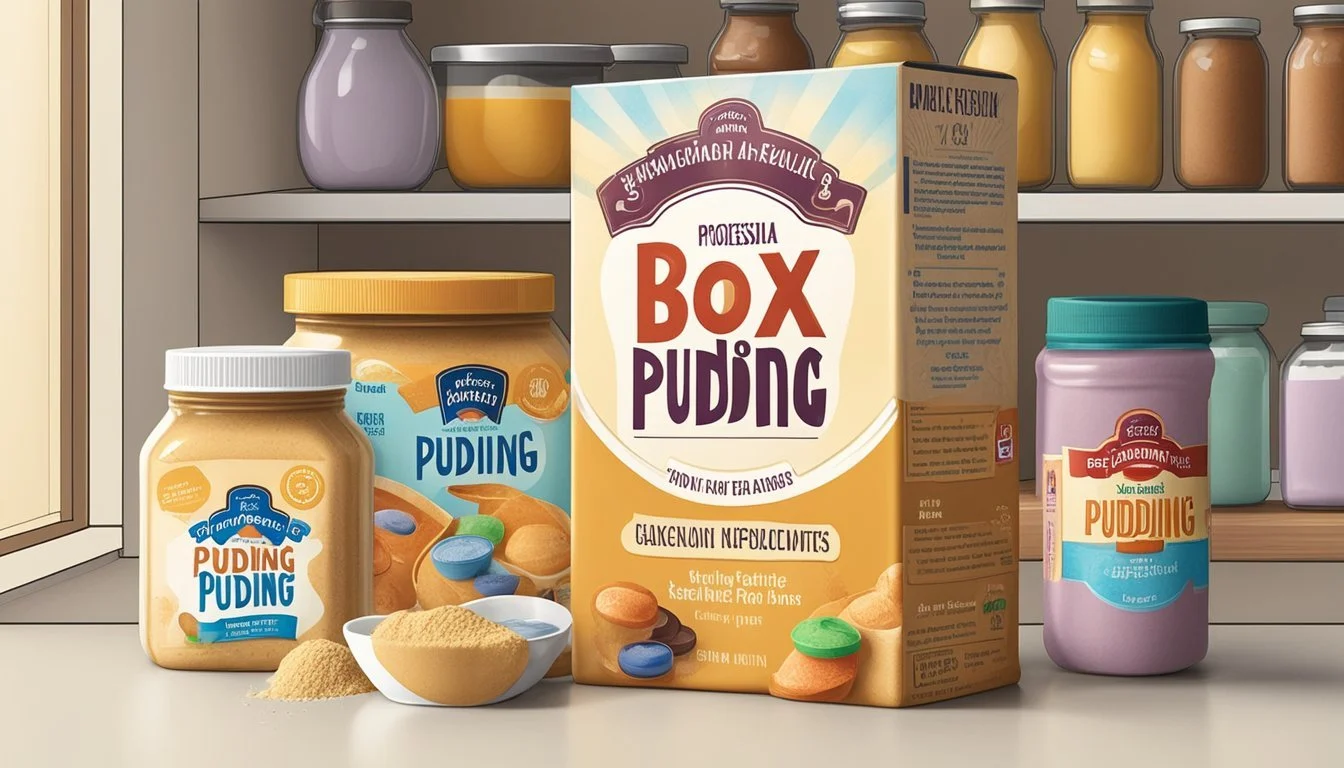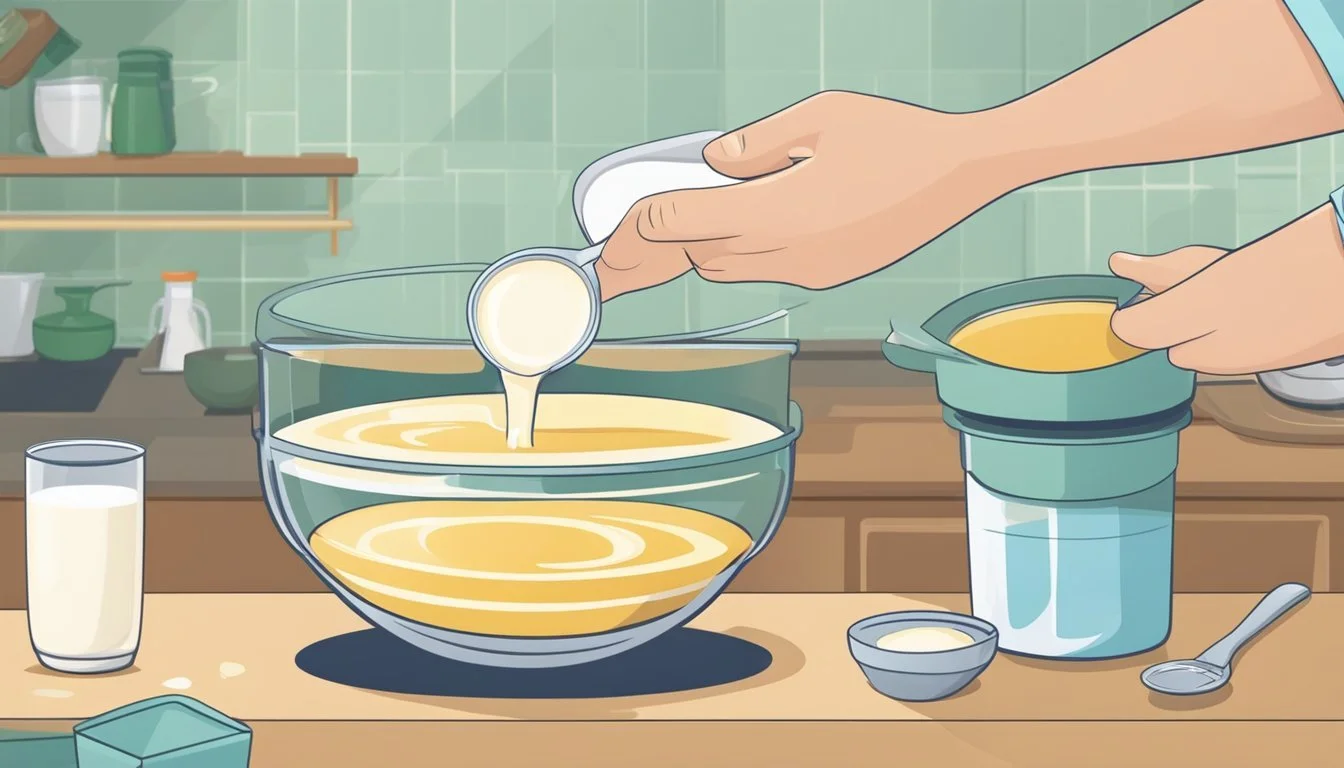How Long Does Pudding Mix Last?
Shelf Life and Storage Tips
Pudding is a popular dessert enjoyed by many for its creamy texture and variety of flavors. However, understanding the shelf life of both prepared pudding and its dry mix counterpart is important to ensure quality and safety. Prepared pudding typically lasts for about one week when stored in the refrigerator. On the other hand, the shelf life of a pudding mix extends much further, remaining usable for months beyond its printed expiration date if kept in a cool, dry area. This longevity is due to the dry mix's lack of moisture, which makes it less hospitable for microbial growth, a common cause of food spoilage.
The shelf life can vary depending on the type of pudding mix, with instant pudding mix having slightly different storage recommendations. Instant mixes are often safe to consume after the expiration date on the package, if stored correctly. Proper storage conditions for pudding mix include keeping it at a stable, room-temperature environment away from direct sunlight and moisture. Any changes in texture, color, or flavor, or the presence of mold or off odors, are signs that the pudding mix has gone bad and should not be consumed.
It's important to note that once pudding mix is prepared, its shelf life shortens significantly due to the introduction of water, thus providing an environment conducive to bacteria and mold growth. Refrigerating the prepared pudding can extend its freshness, but it should generally be consumed within one to two weeks to maintain the best taste and quality. Always consult the packaging for specific storage instructions and shelf life details to get the most out of your pudding experience.
Understanding Pudding Mix
Pudding mix, a staple in many pantries, offers convenience and variety to the dessert-making process. Its shelf life and quality are influenced by ingredients, preservation methods, and the types available.
Components and Preservation
Pudding mixes typically comprise a blend of sugar, starches, flavorings, and occasionally, color additives. Instant pudding mix, for instance, includes preservatives that extend shelf life by inhibiting spoilage. The preservatives and sealed packaging ensure that mixes can last beyond their best-before dates if unopened and stored properly—typically in a cool, dry place.
Ingredients: Sugar, starches, flavorings, preservatives
Shelf Life: Up to a month past expiration when unopened
Storage Recommendations: Cool, dry place
Types of Pudding Mixes
Variety is abundant within the world of pudding mixes, catering to diverse tastes. The most common flavors include:
Chocolate: Rich in cocoa and robust in flavor.
Vanilla: Known for its subtle and versatile taste profile.
Banana: Offers a fruity twist to the classic pudding.
Tapioca: Features tapioca pearls, giving a unique texture.
Strawberry and Caramel: Less common yet distinctive flavor options.
Each type has its own color, texture, and flavor profile that appeals to different consumer preferences.
Indications of Quality
A pudding mix's quality can be assessed by its appearance, texture, flavor, and smell. A fresh mix should have a uniform color and a free-flowing texture without lumps. If a distinct flavor, such as vanilla or chocolate, is promised, it should be easily identifiable and not stale or artificial. An unpleasant smell or visible mold are clear indicators that a mix has gone bad and should not be consumed.
Appearance: Uniform color, no visible mold
Texture: Free-flowing powder without lumps
Flavor: Distinct, corresponds to the labeled variety
Smell: Free from foul odors
Proper Storage Practices
Proper storage of pudding mix is essential for maintaining its quality and extending its shelf life. By understanding and implementing the right storage conditions, individuals can ensure the best possible taste and texture of their pudding.
Optimal Conditions
The key to prolonging the freshness of pudding mix is to store it in a cool, dry place away from direct sunlight. Ideal storage conditions include maintaining a consistent temperature to avoid temperature fluctuations that can affect the mix's quality. Humidity should be kept to a minimum, as excess moisture can lead to clumping and spoilage.
Storage Locations
Pantry/Cupboard: A pantry or cupboard is an excellent location for storing pudding mix, provided it is away from heat sources like stoves or ovens.
Refrigerator: If the environment is particularly humid or warm, storing pudding mix in an airtight container in the fridge can help preserve its quality.
Freezer: While not necessary for unprepared mix, it can be an option for an unopened mix if long-term storage is required.
Maximizing Shelf Life
To maximize the shelf life and ensure the best quality of the pudding mix:
Always use an airtight container or sealable plastic bag to protect it from moisture and other contaminants.
Avoid storing near ingredients with strong odors as pudding mix can absorb these smells, altering its flavor.
Check for any signs of spoilage, such as off odors or textures, before use. If any are present, discard the mix for quality purposes.
Never use a wet spoon to measure out the mix as this introduces moisture and leads to spoilage.
Shelf Life and Expiration
In understanding the longevity of pudding mix, one must recognize the various dates indicated on the package and identify signs of spoilage to ensure food safety.
Understanding Dates
Manufacturers provide best-by, sell-by, and use-by dates to indicate the period during which the pudding mix is expected to remain at peak quality. The best-by or best before date refers to when a product may begin to lose flavor or texture but is not necessarily unsafe to consume. Use-by and sell-by dates are more pertinent to food safety, indicating the last recommended dates for using a product while at best quality. Pudding mix may remain safe to consume even beyond these packaging dates, provided it has been stored correctly—in a cool, dry place away from direct sunlight.
Signs of Spoilage
The presence of mold, specifically brown or black specks, unpleasant odors, or textural inconsistencies, can indicate that the pudding mix has gone bad. Consumers should visually inspect the package for any such signs of spoilage before use. If the expired mix shows any of these indicators, it should be discarded to prevent potential health effects associated with spoiled foods.
Food Safety Concerns
While pudding mix is a dry good and less susceptible to foodborne illness than perishable items, food safety should not be overlooked. Using pudding mix well after the recommended dates can lead to decreased quality and, in rare cases, food poisoning, especially if the product has been exposed to moisture, which increases the risk of spoilage. Consumers should always prioritize their health and discard any mix that appears spoiled, even if it has not reached the listed expiration date.
Using and Consuming Pudding Mix
When it comes to pudding mix, understanding the nuances in preparation and shelf life ensures both safety and enjoyment. The details matter from the moment of mixing to the point where it may no longer be safe to consume.
Preparation Tips
For optimal results, one should follow the preparation instructions on the pudding mix package, which typically require the addition of milk. The mix should be combined thoroughly until smooth to achieve the desired texture. Storage is crucial; prepared pudding and homemade pudding should be refrigerated promptly. To maintain taste and prevent spoilage, it's suggested to cover the pudding to avoid absorption of other food odors.
Determining Usability
To determine if a pudding mix or prepared pudding is still safe to use, assess its smell, appearance, and texture. A good pudding mix should be free of clumps and discoloration, while its smell should not be sour or off-putting. Prepared pudding should retain a smooth texture without any separation or liquid pooling on the surface. If milk was used in the preparation, ensure that it was fresh to prevent potential health problems.
When to Dispose
Pudding mix and prepared pudding should be disposed of if there are signs of deterioration, such as an off smell, discoloration, or the presence of mold. If the package of pudding mix is damaged or the contents have hardened, it’s best to discard it. Prepared pudding typically has a refrigerated shelf life of up to 7 days; beyond this window, the risk of spoilage increases, and it may be unsafe to consume.
Additional Considerations
When storing and using pudding mix, certain strategies can extend its shelf life and ensure food safety, while understanding its application in recipes can optimize its culinary potential.
Extending Usability
To maximize the shelf life of pudding mix:
Store in a cool, dry environment, away from direct sunlight.
For long-term preservation, freezing is an option. Freezing can maintain the nutritional value while preventing the growth of bacteria. However, when freezing, make sure to:
Use a vacuum sealer to reduce air exposure.
Wrap the packaging in heavy-duty foil or plastic wrap to combat freezer burn.
Avoiding Contamination
Preventing pudding mix from going bad requires careful handling to avoid contamination:
Always use clean, dry utensils when removing pudding mix from its container to prevent the introduction of bacteria.
Seal the packaging tightly after each use. Vacuum-sealed bags can prevent both the entry of bugs and moisture, which can lead to spoilage.
Pudding Mix in Recipes
Pudding mix, beyond its basic use, can be versatile in both sweet and savory dishes, serving as a thickening agent:
In savory recipes, pudding mix can add a creamy texture to casseroles or sauces. It's essential to integrate it slowly to avoid clumping.
As a replacement for gelatin in recipes, pudding mix can stabilize desserts and enrich dishes with fruit. Prepared pudding cups can also make a convenient snack while maintaining most of the mix's original nutrients.






